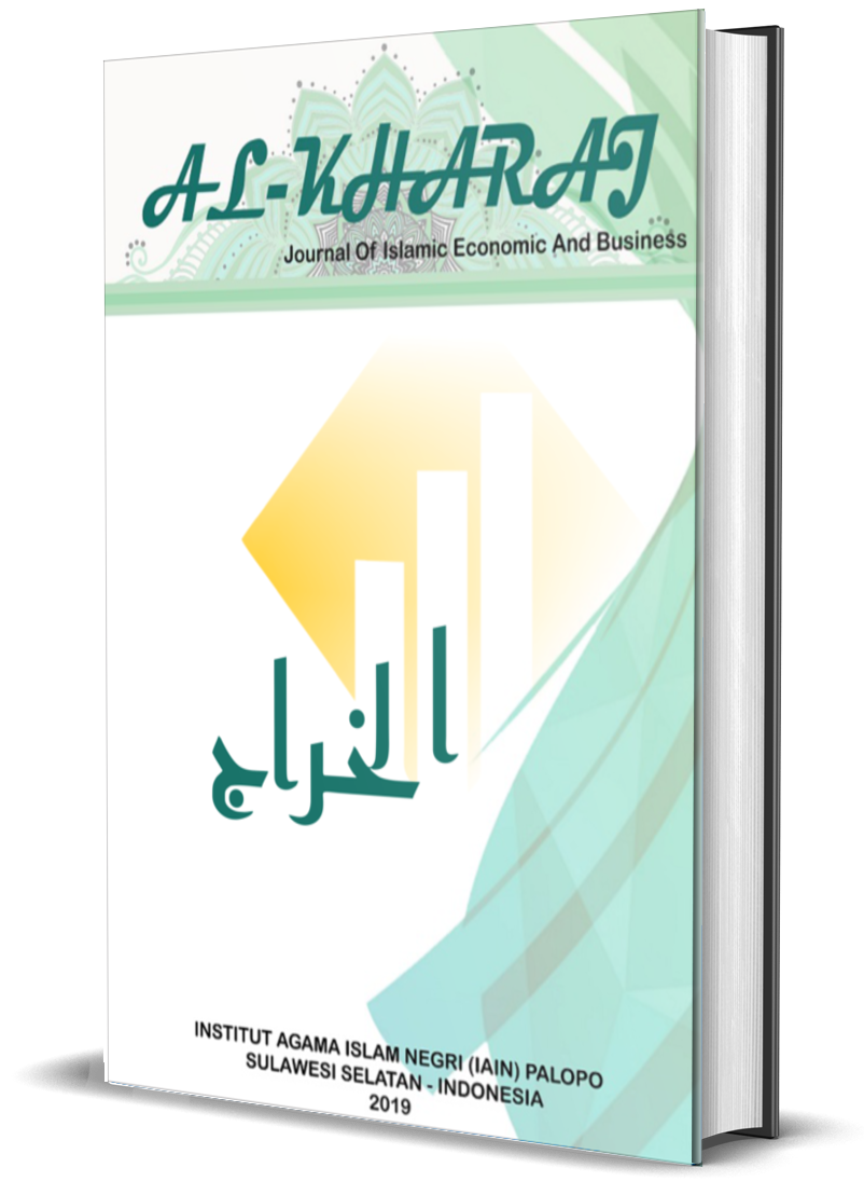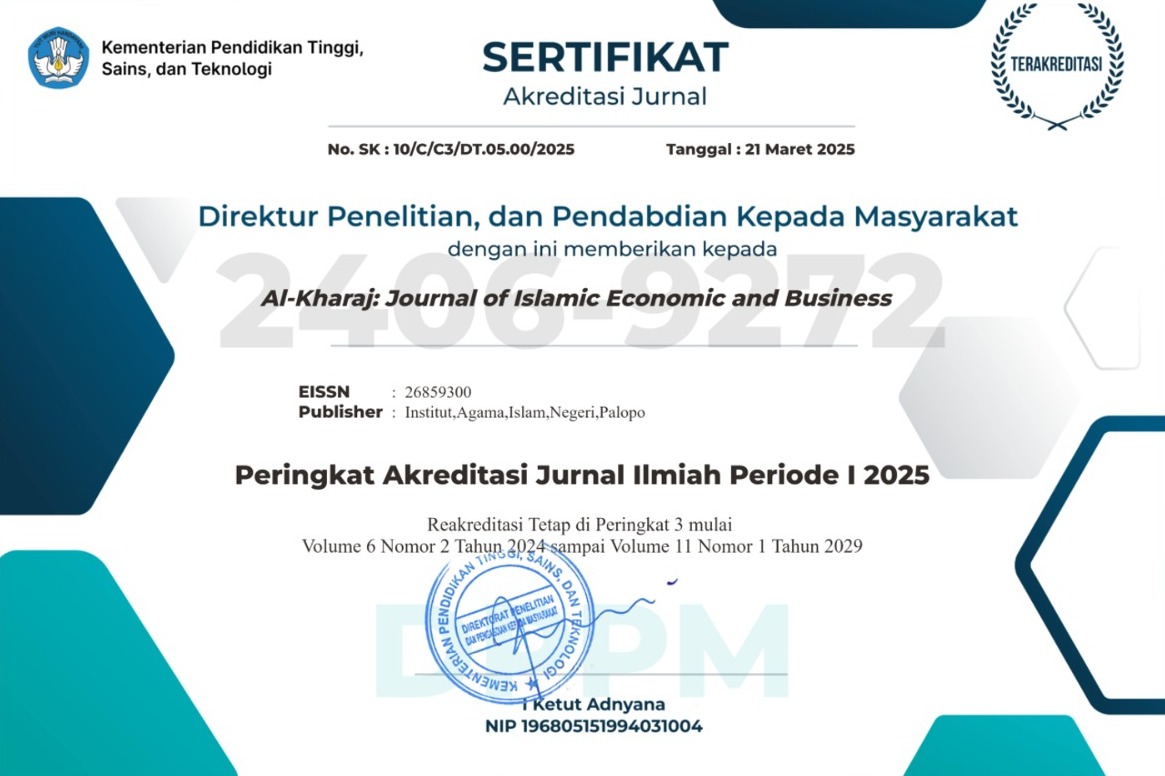The Influence of E-Government on Employee Performance Moderated by Age and Gender (A Study on Employees at Sawahan District, Surabaya City)
DOI:
https://doi.org/10.24256/kharaj.v7i3.7853Keywords:
E-Government, Job Performance, Age, GenderAbstract
This research aims to explore the impact of the implementation of E-Government on employee performance in the Sawahan District of Surabaya, considering the moderating effects of age and gender. E-Government is regarded as a significant innovation in enhancing the efficiency and transparency of public services. The study employs a quantitative approach, utilising data collection techniques through questionnaires distributed to 100 employees in the Sawahan District. Data analysis is conducted using Structural Equation Modeling (SEM) with a Partial Least Square (PLS) approach.
The findings of this research conclude that the implementation of E-Government significantly enhances employee performance in the Sawahan District. Age may act as a factor that weakens this influence, whereas gender may serve to strengthen it. Recommendations for future research include expanding the sample size and considering specific training for older employees to improve their adaptation to technology.
The limitations of this study include a sample that is confined solely to employees in the Sawahan District, which may not represent the entire population of employees in Surabaya or other regions, as well as an imbalanced proportion of age and gender. It is suggested that future research involve a more diverse sample and implement training programmes for older employees to facilitate better adaptation to the E-Government system.
References
Akkerman, A., Sluiter, R., & Manevska, K. (2022). Let’s take it outside: seeking alternative targets for expressing dissent at work when voice is suppressed. Economic and Industrial Democracy, 43(4), 1767–1788.
Alcaide-Muñoz, L., Alcaide-Muñoz, C., & Bolívar, M. P. R. (2020). Analyzing of the Evolution of the Field of E-Goverment and Trending Research Topics: A Bibliometric Study. In Digital Government and Achieving E-Public Participation: Emerging Research and Opportunities (pp. 1–19). IGI Global.
Binns, R., Veale, M., Van Kleek, M., & Shadbolt, N. (2017). Like trainer, like bot? Inheritance of bias in algorithmic content moderation. Social Informatics: 9th International Conference, SocInfo 2017, Oxford, UK, September 13-15, 2017, Proceedings, Part II 9, 405–415.
Bonsón, E., Torres, L., Royo, S., & Flores, F. (2012). Local E-Goverment 2.0: Social media and corporate transparency in municipalities. Government Information Quarterly, 29(2), 123–132.
Chen, C., Ma, L., Chen, Z., & Wen, P. (2022). Gratitude expression to supervisors and subjective career success of civil servants: Evidence from China. Public Personnel Management, 51(1), 48–70.
Eagly, A. H. (2021). Hidden in plain sight: The inconsistent gender gaps in STEM and leadership. Psychological Inquiry, 32(2), 89–95.
Eldor, L., & Vigoda-Gadot, E. (2017). The nature of employee engagement: Rethinking the employee–organization relationship. The International Journal of Human Resource Management, 28(3), 526–552.
Kim, H.-S., Kim, M., & Koo, D. (2022). From teamwork to psychological well-being and job performance: the role of CSR in the workplace. International Journal of Contemporary Hospitality Management, 34(10), 3764–3789.
Kim, H. J., Lee, H. M., Cheon, H., & Ko, H. (2023). Differential impacts of reduced worktime on work-life balance in Korea. Plos One, 18(11), e0294247.
Luna-Reyes, L. F., & Gil-Garcia, J. R. (2011). Using institutional theory and dynamic simulation to understand complex E-Goverment phenomena. Government Information Quarterly, 28(3), 329–345.
Pérez-Nebra, A. R., Viana, B. S., Lira, E., Martín-Hernandez, P., Gracia-Pérez, M. L., & Gil-Lacruz, M. (2022). The work design contribution to educational workers’ sustainable wellbeing and performance patterns. Frontiers in Psychology, 13, 1020942.
Yoong, M. (2022). Women’s empowerment, employment and exclusion. Discourses in economic competitiveness initiatives in Malaysia. In Globalisation, geopolitics, and gender in professional communication (pp. 85–105). Routledge.
Zeeshan, S., Ng, S. I., Ho, J. A., & Jantan, A. H. (2021). Assessing the impact of servant leadership on employee engagement through the mediating role of self-efficacy in the Pakistani banking sector. Cogent Business & Management, 8(1), 1963029.
Downloads
Published
How to Cite
Issue
Section
Citation Check
License
Copyright (c) 2025 Pariyem Pariyem, Soni Harsono

This work is licensed under a Creative Commons Attribution-ShareAlike 4.0 International License.
Authors retain copyright and grant the journal right of first publication with the work simultaneously licensed under a Creative Commons Attribution-ShareAlike 4.0 International License. In line with the license, authors are allowed to share and adapt the material. In addition, the material must be given appropriate credit, provided with a link to the license, and indicated if changes were made. If authors remix, transform or build upon the material, authors must distribute their contributions under the same license as the original.









